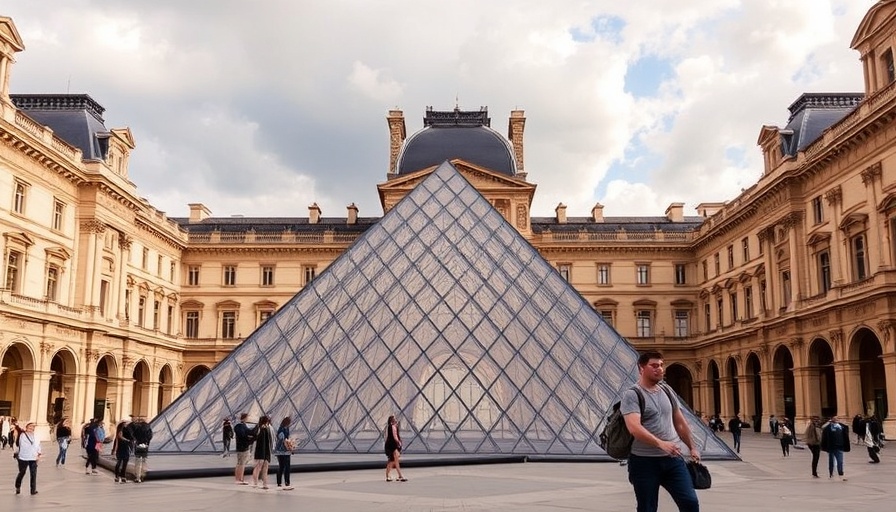
Architectural Ambitions: The Louvre's $316 Million Project
This month, a wave of excitement surrounds the Louvre as it invites architects worldwide to present their innovative designs for a substantial $316 million expansion. Following a recent workers' strike highlighting the museum's current overcrowding issues, this ambitious project aims to enhance visitor accessibility and improve the exhibition of its renowned collection, which includes the iconic Mona Lisa.
Reimagining the Visitor Experience
The Louvre, renowned for being the most-visited art museum globally, hosted nearly nine million visitors last year alone. Despite its majestic architecture and rich history, the museum's main entrance beneath I.M. Pei’s glass pyramid has shown its limitations. The proposed solutions may alleviate the significant bottlenecks currently experienced, especially during peak tourist seasons.
According to Rachida Dati, France’s culture minister, this expansion marks a pivotal moment for Paris’s cultural landscape. The competition seeks a design that not only resonates with the historical elements of the Louvre but also embraces contemporary needs. The winning design will add a new entrance to the eastern side of the palace overlooking the Seine River, effectively providing visitors with “breathing room.”
The Importance of Modernization
As the Louvre evolves, it is critical to address the challenges presented by modernization without compromising its historical essence. Louvre President Laurence des Cars emphasized that while the existing pyramid structure is a masterpiece in its own right, expanding and improving the overall visitor experience is essential.
Beneath the new eastern courtyard, the expansion will feature additional exhibition spaces, including a dedicated area for the Mona Lisa. This move demonstrates the Louvre's commitment to showcasing its masterpieces in a suitable and accessible manner. By 2031, when construction is expected to be completed, visitors will experience a reimagined journey through art that honors its past while embracing the future.
The Louvre's Legacy and Future Prospects
Constructed in the 16th century, the Louvre was originally a royal palace and has transformed into a symbol of France’s cultural heritage. The architectural debate surrounding the new entrance also reflects broader concerns about how historical sites maintain relevance in today’s rapidly evolving world. The balance between preserving history and adapting to modern needs will be a defining factor as the Louvre pushes forward with this expansion.
This architectural competition isn’t just about building a new entrance; it’s about redefining space, access, and the way the public interacts with art. Designers will aim to create a harmonious blend between the 17th-century colonnade and newly envisioned spaces that cater to both the art and its admirers. This balance will dictate the Louvre's success as a leading cultural landmark long into the future.
Call for Global Contributions
The Louvre’s open call for architects invites innovative ideas to redefine its layout, emphasizing the importance of global collaboration in cultural projects. As local and international architects prepare their submissions, the anticipation builds. The selected designs will represent a fusion of creativity and functionality, setting a precedent for how cultural institutions can adapt to modern demands.
Through this process, Paris reaffirms its role as a cultural hub, attracting talent and ideas from around the globe. The Louvre’s journey towards expansion will influence architecture and cultural preservation initiatives, showcasing the power of art in shaping our environments.
A Lasting Impact on Art and Communities
In an era where the question of accessibility to culture grows ever more pressing, this Louvre expansion could inspire similar initiatives in museums worldwide, including in places like San Diego, where art and culture form a significant part of community identity. As cities prioritize cultural access and engagement, concepts fostered in Paris may find their way back to local spaces, encouraging everyone to seek interactions with art on both personal and communal levels.
As the architectural competition continues, all eyes will be on the Louvre to see how it navigates this crossroad of history and innovation. The expansion not only marks a win for the museum but for art lovers globally, who eagerly await the creative solutions destined to breathe new life into an age-old institution.
 Add Row
Add Row  Add
Add 




Write A Comment